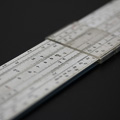Experimenting with Azure IoT Suite
![]() Last year, Microsoft announced the Azure IoT Suite. Behind this somewhat pompous name hides two examples of use of their Azure cloud with connected objects. We are going to see how to use Yoctopuce modules in one of these two examples.
Last year, Microsoft announced the Azure IoT Suite. Behind this somewhat pompous name hides two examples of use of their Azure cloud with connected objects. We are going to see how to use Yoctopuce modules in one of these two examples.
| No comment yet | Read more... |
Controlling Yoctopuce modules from MQTT
![]() YoctoHubs can automatically publish sensor values on a MQTT broker, as we illustrated in a previous post on this topic. However, for scalability and security reasons, YoctoHubs cannot use MQTT messages to drive connected modules. There are however circumstances where it might be desirable to integrade Yoctopuce command devices in an existing MQTT architecture. In this case, it is enough to use a small gateway between the MQTT protocol and the Yoctopuce modules. This is what we are going to do this week.
YoctoHubs can automatically publish sensor values on a MQTT broker, as we illustrated in a previous post on this topic. However, for scalability and security reasons, YoctoHubs cannot use MQTT messages to drive connected modules. There are however circumstances where it might be desirable to integrade Yoctopuce command devices in an existing MQTT architecture. In this case, it is enough to use a small gateway between the MQTT protocol and the Yoctopuce modules. This is what we are going to do this week.
| No comment yet | Read more... |
Calibrating a Yoctopuce sensor
 Generally, we always try to use sensors which do not require any calibration. But, in some cases, we cannot work around this step, in particular if you need to compensate an external perturbation. All the Yoctopuce sensors have the possibility to automatically apply a correction to the value returned by the sensor. Let's see how it works.
Generally, we always try to use sensors which do not require any calibration. But, in some cases, we cannot work around this step, in particular if you need to compensate an external perturbation. All the Yoctopuce sensors have the possibility to automatically apply a correction to the value returned by the sensor. Let's see how it works.
| No comment yet | Read more... |
How to correctly use a Yocto-3D-V2 in Unity
![]() From time to time, some customers complain that the Yocto-3D-V2 lacks reactivity. But each time, it's due to a misunderstanding of our API. Indeed, to use the Yocto-3D-V2 efficiently, you must imperatively use callbacks. To illustrate this issue in an entertaining way, we have decided to show you how to correctly use a Yocto-3D-V2 in a Unity 5 game engine.
From time to time, some customers complain that the Yocto-3D-V2 lacks reactivity. But each time, it's due to a misunderstanding of our API. Indeed, to use the Yocto-3D-V2 efficiently, you must imperatively use callbacks. To illustrate this issue in an entertaining way, we have decided to show you how to correctly use a Yocto-3D-V2 in a Unity 5 game engine.
| No comment yet | Read more... |
Overview of the UWP library
 Several customers have tried to use our C++ or C# libraries with Windows 10 IoT on a Raspberry Pi. Unfortunately, this doesn't work because Windows 10 IoT is not a "true" Windows: it doesn't allow you to run Win32 applications. You can run only the new universal applications. We are currently working on a solution which would allow you to use our modules on all the Windows 10 versions, including Windows IoT. This post gives us the opportunity to review the matter...
Several customers have tried to use our C++ or C# libraries with Windows 10 IoT on a Raspberry Pi. Unfortunately, this doesn't work because Windows 10 IoT is not a "true" Windows: it doesn't allow you to run Win32 applications. You can run only the new universal applications. We are currently working on a solution which would allow you to use our modules on all the Windows 10 versions, including Windows IoT. This post gives us the opportunity to review the matter...
| No comment yet | Read more... |


